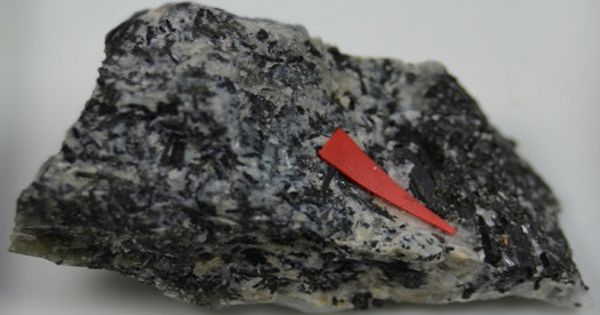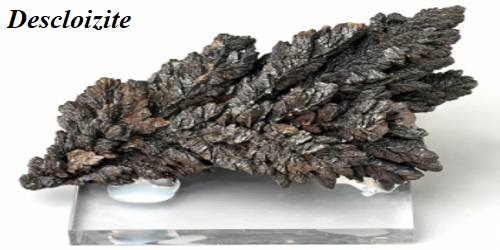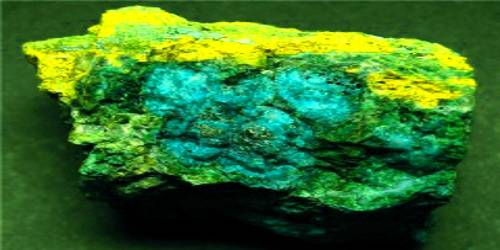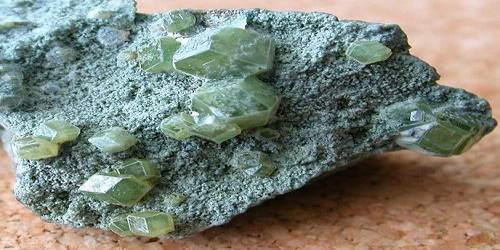Nabalamprophyllite has a general formula of Ba(Na,Ba){Na3Ti[Ti2O2Si4O14](OH,F)2}. It is a monoclinic-prismatic mineral containing aluminum, barium, calcium, fluorine, hydrogen, iron, magnesium, manganese, oxygen, potassium, silicon, sodium, strontium, and titanium. The name is given for its composition (Naba, meaning sodium, Na and barium, Ba) and relation to other lamprophyllite-group minerals. Lamprophyllite is a rare Ti-bearing silicate mineral usually found in intrusive igneous rocks.
General Information
- Category: Sorosilicate
- Formula: (repeating unit) Ba(Na,Ba){Na3Ti[Ti2O2Si4O14](OH,F)2}
- Crystal system: Monoclinic
- Crystal class: Prismatic (2/m) (same H-M symbol)
- Color: Brown to bright yellow crystals.

Properties
Nabalamprophyllite is monoclinic, which means crystallographically, it contains three axes of unequal length and the angles between two of the axes are 90°, and one is less than 90°. Its calculated relief is 1.86 – 1.87. Its color in plane-polarized light is green-brown, and it is weakly pleochroic.
- Crystal habit: Prismatic, sheaf-like, random aggregates
- Cleavage: Perfect (001)
- Mohs scale hardness: 3
- Luster: Glassy
- Streak: White
- Diaphaneity: Transparent to translucent
- Optical properties: Biaxial positive
Occurrences
The mineral has only been found in Russia, usually in association with coarse-grained igneous rocks called pegmatites. The type localities are the Inagli alkaline–ultrabasic massif, Yakutia, and the Kovdor alkaline–ultrabasic massif in the Kola Peninsula.
In terms of its optical properties, nabalamprophyllite is anisotropic which means the velocity of light varies depending on the direction through the mineral.
Information Source:
















